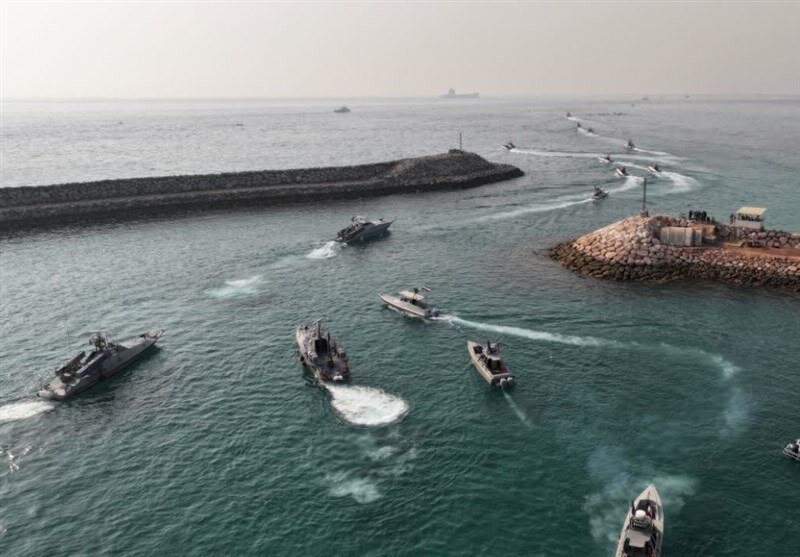Hybrid message from Bu Musa

TEHRAN – Iran has staged massive military exercises on a number of strategic islands in the Persian Gulf amid renewed American efforts to reinforce their military presence in the region.
On Wednesday, the Islamic Revolution Guards Corps (IRGC) Navy announced the start of drills with a different purpose: Defending the three islands of Bu Musa, the Greater Tunb, and the Lesser Tunb, which are claimed by the United Arab Emirates (UAE).
The war games also included the lesser-known island of Naze’at. The drills were meant to “display the IRGC Navy’s might as well as combat and defense preparedness in protecting the Persian Gulf security and the Iranian islands”, the IRGC said, according to Tasnim.
Various types of weapons and equipment were employed in the drills, with troops training for rapid deployment from the southern port city of Bandar Abbas to the islands.
Various units of the IRGC Navy, including the combat, naval, missile, drone, rapid reaction, electronic warfare and airborne units, backed by the IRGC Aerospace Force, exercised a range of military tactics in the war game.
The IRGC has deployed the ‘Fath’ and ‘Qadir’ missile systems on the Iranian islands, including Abu Musa.
An IRGC Navy commander said the vessels of ‘Hojaji Special Unit’ have been, for the first time, furnished with missiles with a range of 600 kilometers to ensure the security of Abu Musa and the other Iranian islands.
The IRGC Navy has also employed missile-launching speedboats that reach a velocity of 90 knots, unmanned aerial vehicles, artificial intelligence-powered remotely operated naval vessels, amphibious aircraft, and precision-strike naval ballistic missiles in the exercise.
The drills come amid a set of developments that have warranted an Iranian response. First, the UAE has increased its diplomatic efforts in relation to the three Iranian islands. In less than a year, it pushed for controversial statements involving Russia and China, the two strategic partners of Iran. Using the cover of the Persian Gulf Cooperation Council, the UAE has worked to elicit statements signed by Beijing and Moscow that call into question Iran’s territorial integrity.
Iran has responded harshly to those statements, summoning the envoys of China and Russia.
While Iran diplomatically made it clear that its sovereignty over the three islands is inviolable, the drills severed as a military complement to the diplomatic efforts in this regard. Therefore, the message of the drills is clear: Iran is ready and determined to protect its territorial integrity no matter what outsiders do. In a sense, Iran conveyed the message that its sovereignty is not subject to diplomatic considerations.
But the Persian Gulf drills also had another important context, which is the deployment of additional American troops and military equipment to the Persian Gulf.
Over the last few weeks, the U.S. has made many announcements regarding troop deployments. And the U.S. put that in the context of countering Iran’s alleged threats.
In a July 20 statement, the Pentagon said, “The Secretary of Defense has ordered the deployment of a portion of the BATAAN Amphibious Readiness Group/Marine Expeditionary Unit (ARG/MEU) comprised of the USS Bataan, USS Carter Hall, and its associated personnel and equipment into the USCENTCOM area of responsibility (AOR), in addition to the recently approved forces comprising F-35s, F-16s, and a guided missile destroyer, the USS Thomas Hudner (DDG-116).”
Most recently, the U.S. said it was considering putting armed personnel on commercial ships traveling through the Strait of Hormuz.
This new action was also put in the context of countering Iran seizing ships traveling through the Strait of Hormuz. With the U.S. saber-rattling taking a new turn, the IRGC appeared to have recognized the need to flex its military muscles in the Persian Gulf in a move to showcase Iran’s readiness to respond to any aggression.
Qadir cruise missile system and Fatah 360 ballistic missile equipped with artificial intelligence were unveiled and added to the IRGC Navy for the first time.
The vessels of the Hojaji Special Unit were equipped with missiles with a range of 600 km for the first time.
Leave a Comment